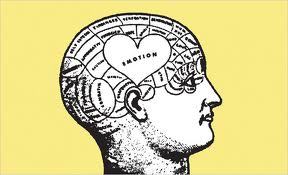It’s Time for my Mind to Drift
I normally use a life experience or story to illustrate the meanings and take-a-ways from a theoretical book. But in the case The Social Animal by David Brooks, the book is the story and I have to come away with the theoretical meanings and take-a-ways. Insights and tidbits of stimulating information flowed from every page but the storyboard format allowed for engaging reading.
Based loosely upon the social agenda of the unconscious mind, Brooks shares why we do what we do and why we want or don’t desire to act in certain ways; by ourselves, in groups, in stressful and non-stressful situations in all age periods of our lives.
He says that as we age towards retirement, our mind drifts back in nostalgia to earlier times of life and we sense a peace and contentment from those wanderings. I felt a similar tug as I mirrored my life with his fictional characters. From remembering the 700 hours of sleep loss with the birth of our firstborn, to map melding and the big dip that occurs, which finally curves upwards again in the empty nest syndrome. I tracked with him as he explained about mirror neurons and the way are able to permeate each other’s minds and feel that it’s happening to us – whether it’s crying for our kids who can’t get employment or grieving with a good friend in the loss of a loved one.

As one whose position is always a teacher, the fact that a person forgets in weeks, 90% of what is learned, reminded me of the importance of seeing our job as shaping a person’s perception of the world rather than transmitting facts and information. In an article by Meredith Kane, she says that the “one thing true friends do, even when they can’t do anything else, is to show up.” It’s all relational.
As my research for George Fox is the possibility of modifying behavior, I was intrigued by the emergent systems Brooks discussed (p.110). As regularities emerge within one’s culture, habits form, which are hard to break out of. But, if one can be surrounded by a new culture with different relationships, then new thoughts will be absorbed, new habits developed and a new perception of life will take place. The key to keep one from reverting to an old lifestyle is the necessity of creating a “counter culture” that will continue affirming the new decisions and efforts which are made by the one making a change. Our job is to create counter cultures embedded with people of like-minded worldviews.
So much is contained in this book: eating habits, implicit learning, negative and other loops, dynamics of groups, voting trends, triggers and even how meditation, prayer and Pentecostal expressions all create an alteration in our unconscious minds allowing us to see an unrestrained picture of reality.
As a Christian, marching orders could be taken from his stories about behavioral change in larger populations. (pgs.323, 338) Tests have shown that successful behavioral change comes from a change in a person’s virtue rather than through education. Using unprotected sex as an example, he found that training in the morality of right and wrong of a behavior yielded higher levels of positive behavior than sexual education. I see this as a declaration that along with reality, we still need to proclaim moral behavior as possible and have the courage to not retreat from exposing sin (although sin looks different to different groups).
Lastly, to us as leaders, a charge is given. We need to have the talent of simplification – taking complex situations and capturing the heart of the matter in simple terms and then the ability to communicate this truth successfully. In any endeavor, this is essential, especially when dealing with truths of Christ and the demands exerted on our lives.
P.S. I also learned that if I eat out with groups of 7 or more, I will eat 96% more food than if I was to eat at home – Lord, keep me from groups and relationships!
Leave a Reply
You must be logged in to post a comment.